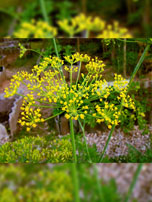SHAHEED KARTAR SINGH SARABHA AYURVEDIC MEDICAL COLLEGE & HOSPITAL
Affiliated to Guru Ravidas Ayurved University, Hoshiarpur Punjab
Affiliated to Guru Ravidas Ayurved University, Hoshiarpur Punjab

Botanical Name : Anethum sowa Roxb. ex Flem.
Family : Umbelliferae; Apiaceae.
Introduction :
This drug commonly used in the management of indigestion, anorexia, flatulence etc.
Scientific classification: Dill belongs to the family Apiaceae (formerly Umbelliferae). It is classified as Anethum graveolens
Names in different Indian languages :
English : Indian Dill,Sowa,Anet
Hindi : Soya
Kannada : Sabbasige
Malayalam : Satakuppa
Sanskrit : Satapuspa
Tamil : Satakuppi
Telugu : Satakuppivittulu
Unani : Shibt,Soyaa
Synonyms :
Atilambi, Käravi, Misi, Madhürã, Sitachatrã, Shataahvaa. Shatapushpaa
Anethum graveolens Linn. var. sowa Roxb.
Anethum graveolens DC.
Peucedanum sowa Roxb.
Peucedanum graveolens Benth
Classification according to Charaka, Susrutha & Vagbhata :
Charaka
Asthapanopaga, Anuvasanopaga
Susrutha
Vagbhata
Varieties & adulterants – (CV – controversy, AD – adulterants) :
1. A. graveole – Variyati Sowa (fennel sowa)
2. A. sowa – Ghoda sowa (horse sowa).
3. Satahva [CV]
Morphology :
A glabrous aromatic annual herb of 30-90 cm. high. With hollow finely grooved stem, striped dark green.
Leaves- compound, bluish green, bipinnate or tripinnate, linear, leaf sheat surrounds the stem.
Flowers-white coulored and petals yellow coloured, style smaller in size.
Fruit 4×2 mm. dorsal intermediate ridges distinct; slender; vittae large, solitary in each furrow, 2 on the commissure
Distribution & Habitat :
Often cultivated throughout the tropical and subtropical India
Chemical constituents :
coumarins, xanthones , triterpenes, Its seeds contain a 3 to 5% volatile fragrant oil
Fruit or seed oil— Caryone dihydrocan,one limonene apiol, dill-apial bergarno transdihydrocarv beta—caryophyllene, cugenol, cis-ocimene; difffuran, beta—sitosterol
Properties :
Rasa Katu, Tikta
Guna Laghu, Tiksna
Virya -Usna
Vipäka Katu
Karma : Vãta-kapha hara, Dipana,pachana, stanya janana, ruchyam
Digestive, anthelmintic, anti inflammatory, diuretic, febrifuge, anti spasmodic
Part Used :
Fruit, leaves
Dosage :
Powder 2-4g; oil 2-4 drops; Arka 30-40 ml
Indications :
süla, Jvara, Netra roga, Vrana, Gulma, Adhmãna
colic, hiccough, cough, asthma, ulcers, hepatopathy, uropathy, cardiac debility.
Internal uses :
Nervous system : Brain tonic and useful for eyes. It is useful in weakness of brain and eye sight.
Digestive system : Reduces dyspepsia. vomiting. deepan. pachan. anuloman. Basically, it is purgative in nature It is also used in distension, pain in abdomen, dysentery and piles. it acts as amapachak and anulomak of vata and it removes amadosha out of the body. Because of this, it reduces spasms. Fried fennel and ginger powder should be taken in spasmodic pain to reduce the spasm along with other medications. Root is used as purgative. It is extremely useful remedy for abdominal colic.
Circulatory system : Useful for the heart. As it is rakta prasadan. it is useful in heart diseases and also in blood disorders.
Respiratory system : Kaphaghna and kapha expectorant. So used in kaphaja kasa and asthma.
Urinary system : Diuretic. useful in dysuria. urine retention.
Reproductive system : Induces menstruation and increases breast milk secretion, Useful in dysmenorrhoea. menstrual obstruction and mastitis.
Skin : In kushtha. it induces sweating, removes blood impurities and acts as kushthaghna. It is applied locally on boils which occur due to heat in summer.
Temperature : Febrifuge and reduces burning.
Important Yogas or Formations :
Shatapushpadi churna, Shatapushpadi ghrit, Shatapushparka, satapuspadikaãya, satapupadi lepa satapuspã, Arka soya (Dill water)
Important research work going on :
(1) stimulating property
(2) fungicidal activity
Therapeutic Uses :
(1) Suskaras_ Non-bleeding pile mass shall be fomented with a warm bolus of Vacha and satapuspa along with Snigdha Dravyas (C.S.Cj.14/41) (2) Vãtarakta_ Oil prepared with the decoction of satakupa, kustha and Madhuka may be useful (B.P.Ci.29)
